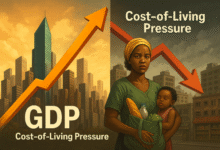
Nigeria’s 2025 spending plan just hit a hard reset. In a rare joint move, the Senate and House Appropriations Committees have ordered the withdrawal of all contract-award circulars already issued for FY2025 and signalled a longer execution runway for capital projects. Translation: no new procurement races ahead of the official green light—and more time to finish big-ticket projects.
What Changed
- Contract circulars pulled: All FY2025 contract-award guidance sent by the Executive to MDAs is to be withdrawn immediately pending formal spending authority.
- Capex extension: Lawmakers indicated the ₦23.9trn capital component of the ₦54.99trn 2025 budget will run into 2026, protecting projects from “use-it-or-lose-it” waste.
- Faster AIE: The Authority to Incur Expenditure (AIE) for 2025 must be issued within seven days of the budget review session—aimed at preventing the slow starts that cripple Q1 execution.
- 2024 spillover confirmed: The 2024 capital budget remains live through Dec 31, 2025, ensuring ongoing works don’t stall for paperwork.
Why It Matters
- Procurement discipline: Pulling circulars resets the process and curbs premature awards, opaque addendums, and “commit-now, fund-later” practices that inflate arrears.
- Execution certainty: A longer capex window tackles the country’s perennial late-cash, early-deadline problem that leads to rushed spending and poor quality.
- Cashflow realism: With revenue reform still bedding in, a multi-year capex cadence aligns disbursements with actual inflows—reducing payment backlogs and contractor distress.
- Macro signalling: Clearer sequencing (AIE first, procurement next) supports FX stability and contractor financing, as banks prize predictable sovereign payment cycles.
Winners & Losers
- Winners:
- Serious contractors with capacity and performance histories—less room for last-minute awards and rent-seeking.
- Priority infrastructure (roads, bridges, power, health, education) that can now plan logistics and mobilize credibly over a longer horizon.
- States & MDAs with bankable pipelines and clean documentation—faster AIE means earlier site activity.
- Serious contractors with capacity and performance histories—less room for last-minute awards and rent-seeking.
- Losers:
- Middlemen feeding on circular ambiguities.
- Speculative bidders banking on truncated timelines and end-year rush.
- Middlemen feeding on circular ambiguities.
What Investors Should Watch
- AIE issuance clock: Does the seven-day target hold? That’s the canary for Q1 execution.
- Capex roll-over list: Which projects formally migrate into 2026? Expect a prioritized register (economic multipliers first).
- Payment discipline: Monthly publication of commitments vs. cash releases will separate ambition from traction.
- Procurement transparency: Timely adverts, bid openings, and award notices will indicate whether the reset is cosmetic or real.
Execution Risks (and Fixes)
- Bureaucratic drag: Fix with deadline-driven SLAs for Budget, Finance, AGF, and procuring entities.
- Contractor arrears: Publish a verified legacy-debt schedule with a cash-and-bonds clearance plan to keep sites active.
- Fragmentation: Enforce project caps and roll small, duplicative projects into focused, high-impact programs.
- Leakage: Mandate end-to-end e-Procurement and e-Invoicing across MDAs to tighten controls and audit trails.
BRANDECONOMY Take
This is the most consequential procurement recalibration in years. Withdrawing circulars closes the loopholes that spawn arrears; extending capex confronts Nigeria’s chronic “calendar vs cash” mismatch. If the seven-day AIE rule sticks and the centre reports releases publicly, 2025–26 could deliver cleaner contracts, steadier cashflows, and better-built assets—the holy trinity of credible capital spending.
Bottom line: A tighter process and a longer runway beat rushed awards every time. If this execution on Contract circulars matches intent, Nigeria’s 2025 capital budget just got a fighting chance to translate appropriations into real roads, power, schools—and jobs.











